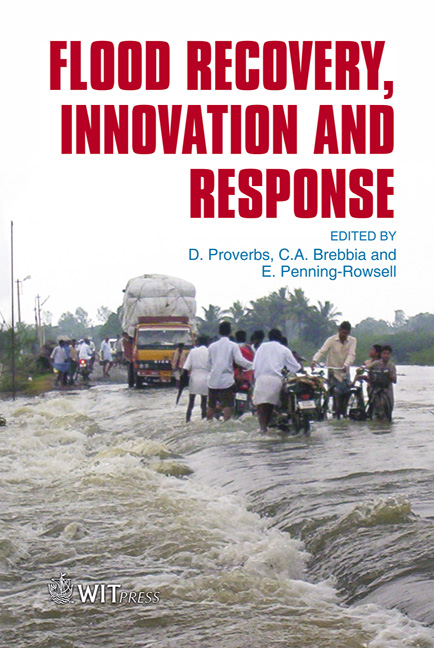Flood Defense In Bekasi City, Indonesia
Price
Free (open access)
Transaction
Volume
118
Pages
6
Page Range
133 - 138
Published
2008
Size
463 kb
Paper DOI
10.2495/FRIAR080131
Copyright
WIT Press
Author(s)
T. Kadri
Abstract
Bekasi is a development city near Jakarta and is the capital city of Indonesia. The total population of Bekasi has reached 1.8 million (2003) with a population density of about 8.595 people per square kilometer and an area of about 21.049 ha. The growing population and business activities have caused a tremendous conversion of agricultural land for houses, offices industrial parks, etc. This changing land use is increasing the run-off coefficient, which in turn is causing floods in the rainy seasons. To manage and reduce the flood risks, planners and decision makers are in need of accurate information on the spatial distribution, magnitude and depth of flooding, and on the land use affected by it. Integration between hydrologic modeling and a Geographic Information System (GIS) has exhibited advantages for flood defense. This technology allows storage of the information and improves information accessibility. In terms of flood defense, GIS provides a contribution for data display, storage and retrieval, site selection, impact assessment, and modeling. Keywords: GIS modeling, hydrological modeling, flood defense. 1 Introduction Over recent years, Bekasi Town has been overwhelmed by floods that cause billions of rupiah of damage in financial terms, as well as material losses to the people who live along the river bank of the Bekasi Hulu River. The first flood catastrophe happened in the year 2002, then the same occurred in the year 2005 and then again in the first quarter of 2007. The floods in Bekasi are getting bigger, with rainfall of 250 mm in 2002 that caused a river discharge in the Bekasi dam of 578.6 m3/s. Even with less rainfall, about 127 mm in 2005, the river discharge of 545 m3/s almost reached the 2002
Keywords
GIS modeling, hydrological modeling, flood defense.





